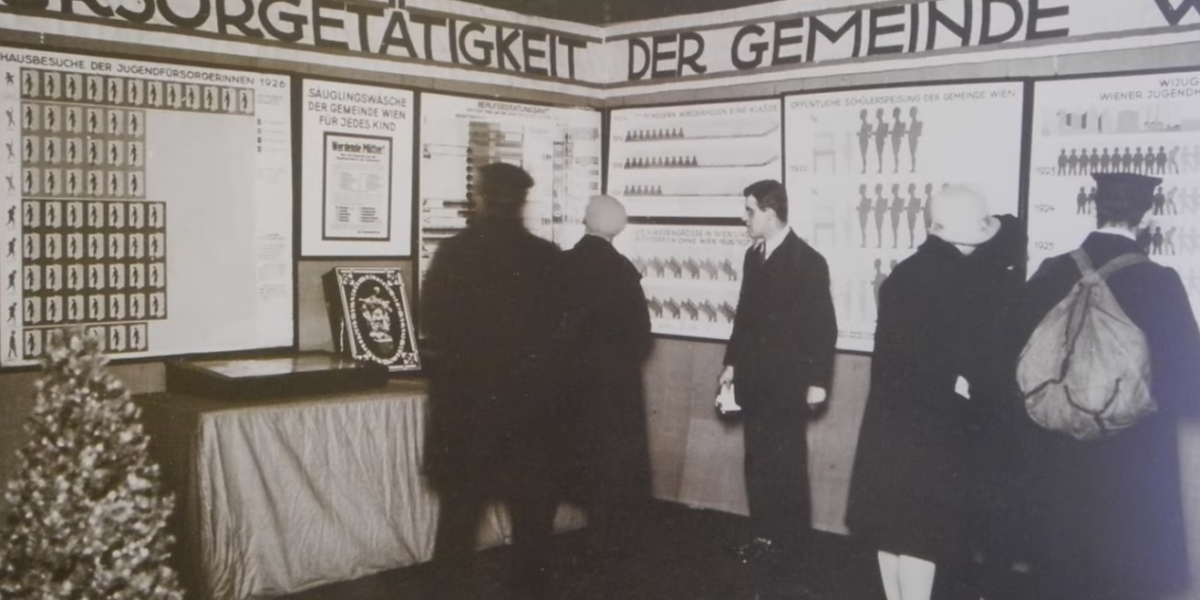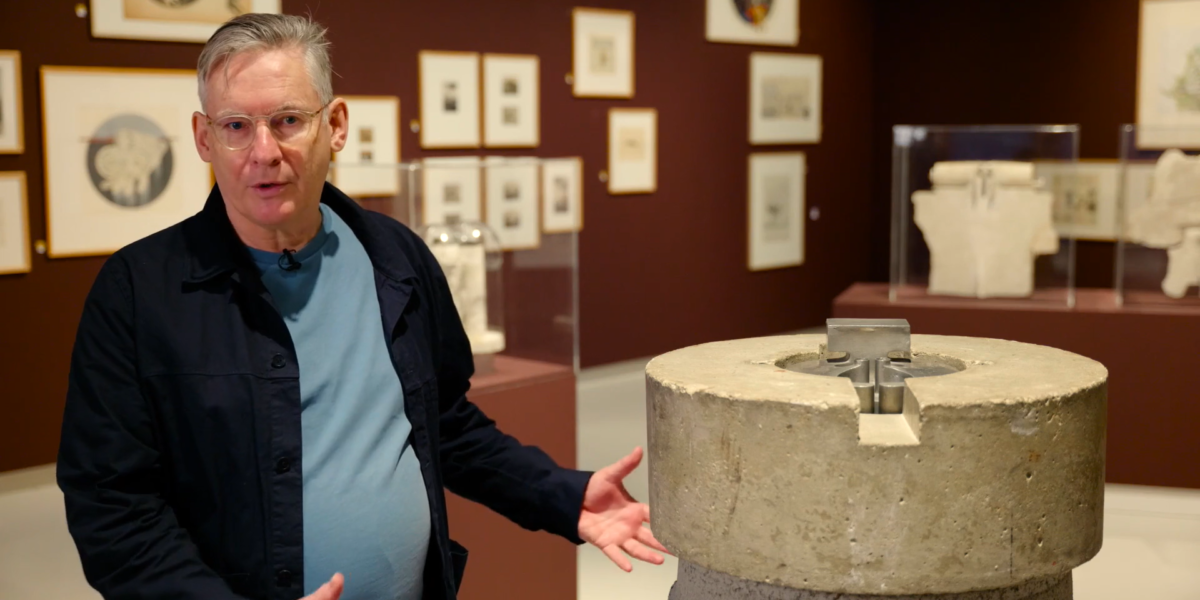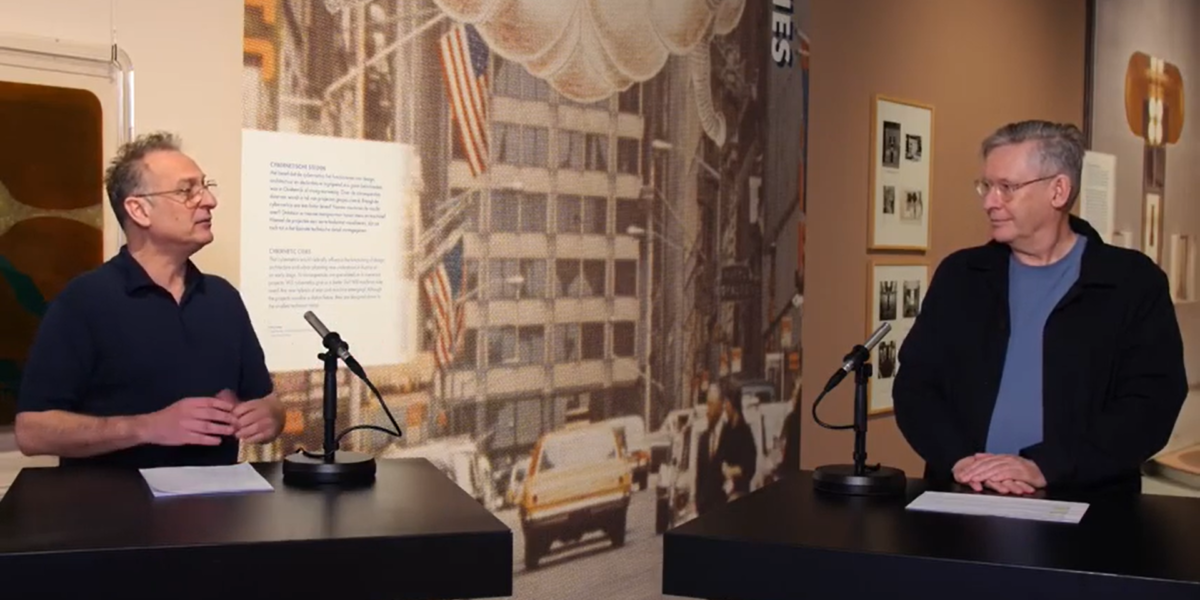Watch: Reports and documentaries from the ORF archive
This introductory text by Bart Lootsma was originally published on architecturaltheory.eu on April 26th, 2021. The original text can be found here.
Parallel to the exhibition Radical Austria: Everything is Architecture in the Design Museum Den Bosch, on the Austrian avant-garde in art, fashion, design and architecture in the nineteen sixties and seventies, architecturaltheory.eu presents a selection of films on and by the protagonists of the exhibition, originally made for and broadcasted by the ORF.
The films are often as radical as the people, ideas and work in the exhibition. They provide a unique snapshot of Austrian culture in the 1960s and 1970s.

Coop Himmel(b)lau’s contribution to Kultur Aktuell, broadcast on May 5th, 1970 (still). Courtesy of architecturaltheory.eu and ORF.
The McLuhian enthusiasm for new media was widespread among the Austrian avant-garde of designers and artists. Hans Hollein’s manifesto Everything is architecture, the countless multimedia installations, Valie Export’s pioneering video art and the television programs employed by the ORF are all examples of this.
The Austrian state broadcaster ORF has a long tradition of high-quality reporting and background information. This is particularly true of its culture programmes. Here, the broadcaster took and takes its Bildungsauftrag, its task to contribute to the “Bildung”, the culture of the viewers, very seriously. Bildung refers to the German tradition of self-cultivation, in which philosophy and education are linked in a way that refers to a process of both personal and cultural maturation. It is a lifelong process.
Kultur Aktuell
In 1967, with Kultur Aktuell a new cultural magazine was initiated in ORF television, which would deal with all art forms. Initially, it was programmed on Saturday evenings, but the popular success of the program with the audience of the ORF made, that soon there was a second broadcast on Tuesdays. And on top of that, after three quarters of a year, it was agreed that every Zeit im Bild news broadcast would dedicate 3-4 Minutes to culture at prime time every day. That enabled the makers to really report about the latest cultural events in Austria and abroad.
“When television was young and new, a group of directors and writers had undertaken to infiltrate television in Austria – and parallel to this in Germany – in an Austriakian way, so to speak.” — Michael Kehlmann, former presenter Kultur Aktuell in the anniversary program Kultur am Wednesday: 25 Jahre Kultur im Fernsehen, 1980.
‘Austriakan infiltration’
Remarkable about ORF’s culture programmes in the nineteen sixties and seventies -but also later- is often their (extremely) critical and experimental character, which is probably unique in Europe. The moderators who introduce the programmes regularly sketch a picture of an existing Austria that is not exactly flattering, particularly where its history is concerned.
Some of the broadcasts we selected are introduced by Dr. Dolf Lindner in the most serious, almost grim way. “When television was young and new,” says Michael Kehlmann in retrospect with a mixture of irony and self-cynicism typical of the presenter of Kultur Aktuell in the anniversary programme Kultur am Mittwoch – 25 Jahre Kultur im Fernsehen (Culture on Wednesday – 25 Years of Culture on Television) in 1980, “a group of directors and writers had undertaken to infiltrate television in Austria – and parallel to this in Germany – in an Austriakian way, so to speak.” Austriaka was originally the Latin name for Austria but today is used solely in a jokingly depreciating way. Maybe just because of this attitude of the presenters, the new medium television became the most important mediator between cultural producers and the audience – a wide audience.
The presentations were filmed in the Museum of the 20th century, which was originally designed by architect Karl Schwanzer for the Expo ’58 in Brussels and reconstructed on a peripheral location in Vienna. Schwanzer was also the professor of most of the members of the Austrian avant-garde at the TU Vienna and responsible for hiring Günther Feuerstein as a teacher. The “Zwanzigerhaus” became the hotbed and meeting place of the Austrian counterculture in the following years. Here the Arena 70 was founded, a centre for alternative and youth culture that still exists today on another location in Vienna.
The format
The format of the cultural broadcasts changed several times over time. Different from Architektur Aktuell, its follower Café Central certainly wasn’t a place of contemplativeness, as one of the moderators said tongue in cheek at the 25-anniversary of the culture programming in the ORF and distanced itself from the way “authorities” introduced the themes in the original cultural programmes. Café Central was indeed a program with seemingly unmoderated discussions as if they took place in a café. Small groups of guests were sitting at small tables close to each other, discuss their work and would often almost scream at each other.
Following on from the bleak introductions by the presenters, we see -often quite long- programmes with artists and designers both from Austria and abroad, who make very radical work – such as the artists and architects in the exhibition Radical Austria – and can be equally weary or, on the contrary, unstoppably but business-like optimistic. The artists and designers -sometimes still students, as it is mentioned- have an important voice in the broadcasts and in a number of cases they obviously direct them themselves. Dealing with media was an important aspect of their work. Hans Hollein in particular, who appears regularly already from his first exhibition Architecture, with Walter Pichler in the Gallery nächst Sankt Stephan in 1963 on, does not only talk about media, but knows how to behave in them as well to bring his points across.
Günther Feuerstein
The series also emphasizes the importance of Günther Feuerstein in the Austrian architectural scene. Feuerstein is known as an architect, writer, editor -he was a member of the legendary editorial board of BAU with Hans Hollein- and teacher of most of the members of the Austrian avantgarde. Not only is there a contribution dedicated to his expulsion as a teacher from the TU Vienna and the student protests against that, but he also manifests himself as the maker a series of quite remarkable theme-oriented programs on future developments in society and architecture, which are often also illustrated with experimental work by former students, like notably Coop Himmelblau. The feature length contribution on and by Coop Himmelblau from May 1970 is one of the many highlights of this series.
“The limitations of the desirable in today’s society stem from the lack of imagination and information.” — Voice-over in Coop Himmel(b)lau's contribition to Kultur Aktuell, broadcast on May 5th, 1970.
Missing Link
We are happy that, in addition to the exhibition, where they are unfortunately not present, we can show larger films by Missing Link. Missing Link was a group of architects formed by Adolf Krischanitz, Angela Hareiter and Otto Kapfinger from 1970 to 1980. Similar to the artists, designers and architects in the exhibition Radical Austria, they realised artistic objects, graphics, actions, performances and experimental films. At the centre of their work, as at the centre of the project Radical Austria, was always the interdisciplinary transgression and interweaving in the arts. Thus they expanded the strict definition of the term architecture – or art, or design for that matter.
This collection is organised in chronological order. It begins with a series of films from the period. After that, there are several retrospective documentaries from later periods. Click here for the complete overview.
Radical Austria: The Movies has been curated by Bart Lootsma, Maya Christodoulaki and Alexa Baumgartner. The introduction was written by Bart Lootsma, the description and technical programming by Maya Christodoulaki.



